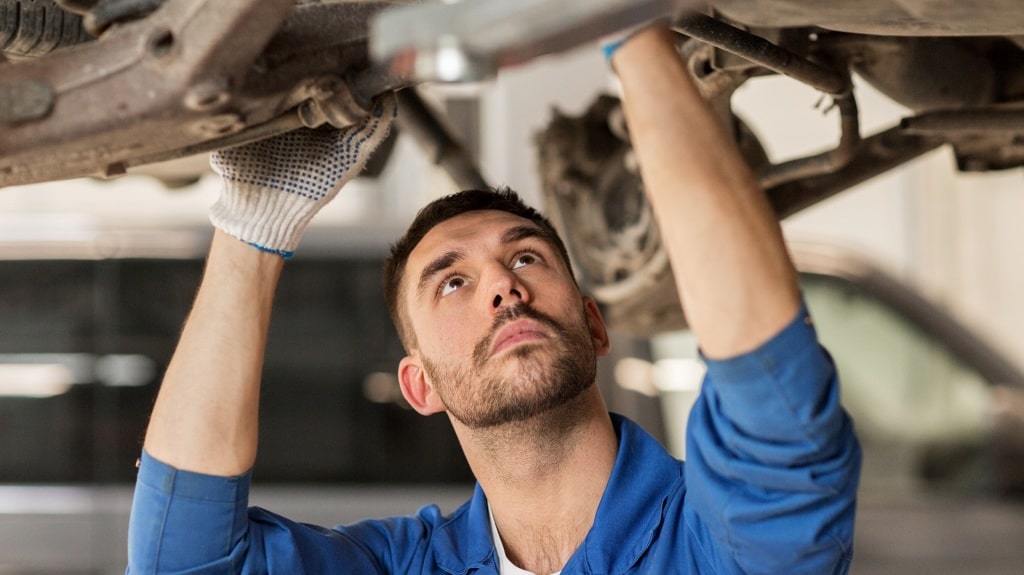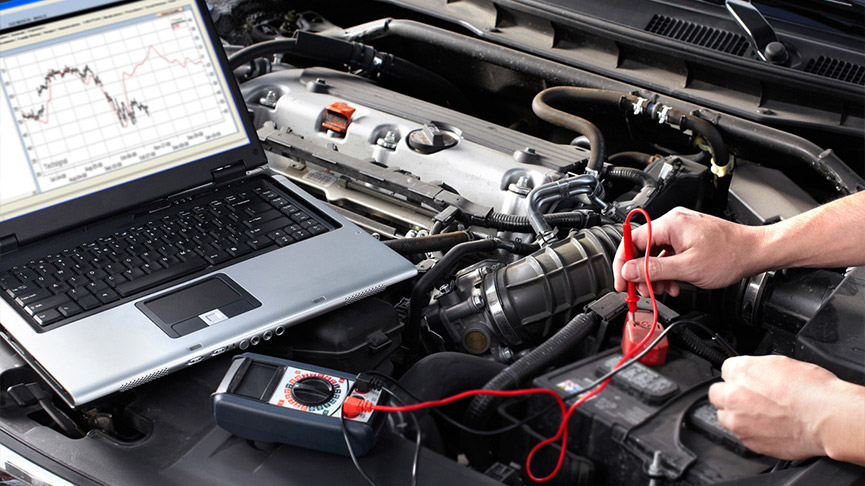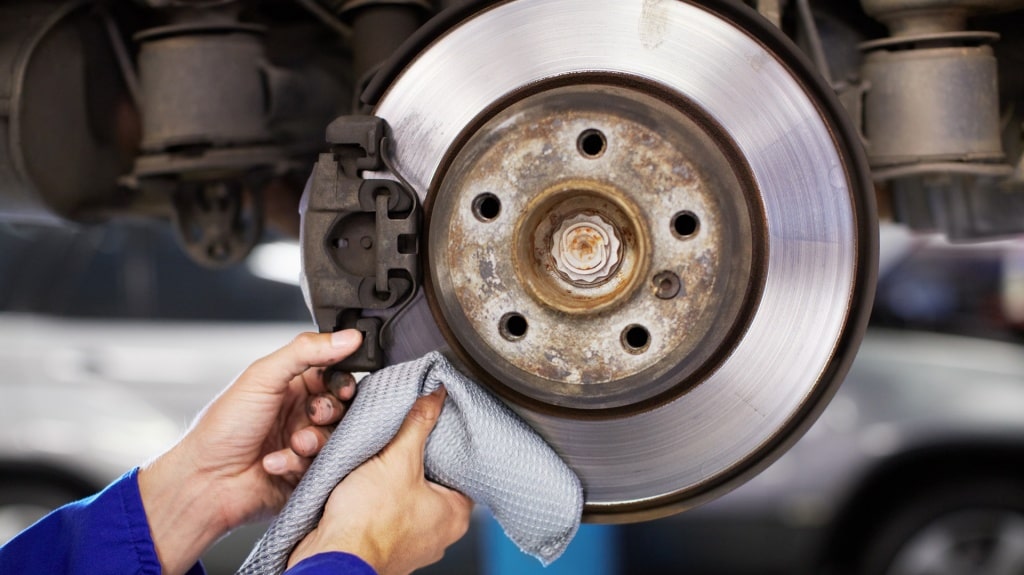
Your car’s fluids should be checked
The Importance of Replacing Car Fluids: A Comprehensive Guide
As a car owner, it's essential to understand the importance of replacing your vehicle's fluids to maintain its performance, longevity, and overall health. In this article, we'll delve into the world of car fluids, discussing the importance of each fluid, the damage that can occur if they're not replaced, and the recommended replacement intervals.
Engine Oil
Engine oil is the lifeblood of your vehicle's engine, lubricating its moving parts and preventing overheating. If engine oil is not replaced regularly, it can cause:
- Engine damage: dirty oil can lead to premature wear and tear on engine components, resulting in costly repairs.
- Increased fuel consumption: a dirty engine can decrease fuel efficiency, increasing your fuel costs.
Recommended replacement interval: every 5,000 to 7,500 miles (Source: "The Essential Guide to Car Fluid Replacement: What, When, and Why" by Burt Watson Ford)
Transmission Fluid
Transmission fluid plays a crucial role in your vehicle's transmission system, facilitating smooth gear shifts and preventing overheating. If transmission fluid is not replaced regularly, it can cause:
- Transmission damage: dirty transmission fluid can lead to premature wear and tear on transmission components, resulting in costly repairs.
- Poor transmission performance: dirty transmission fluid can cause slipping, hesitation, and other transmission problems.
Recommended replacement interval: every 30,000 to 60,000 miles (Source: "Complete Guide: When to Change Your Vehicle’s Fluids" by Sun Auto Service)
Brake Fluid
Brake fluid is responsible for transferring pressure to your vehicle's brake pads, enabling safe stopping. If brake fluid is not replaced regularly, it can cause:
- Brake failure: dirty brake fluid can lead to brake failure, resulting in accidents or injuries.
- Corrosion: brake fluid can absorb water, leading to corrosion and damage to brake components.
Recommended replacement interval: every 25,000 miles or when brake pads and rotors are replaced (Source: "What Fluids in a Car Need to be Changed?" by AutoZone)
Coolant
Coolant, also known as antifreeze, regulates your vehicle's engine temperature, preventing overheating. If coolant is not replaced regularly, it can cause:
- Engine damage: dirty coolant can lead to premature wear and tear on engine components, resulting in costly repairs.
- Overheating: dirty coolant can cause your engine to overheat, leading to engine failure.
Recommended replacement interval: every 30,000 to 50,000 miles (Source: "How Often Should You Change Your Car’s Fluids?" by Capital One Auto Navigator)
Differential Fluid
Differential fluid lubricates your vehicle's differential, enabling smooth power transfer to the wheels. If differential fluid is not replaced regularly, it can cause:
- Differential damage: dirty differential fluid can lead to premature wear and tear on differential components, resulting in costly repairs.
- Poor vehicle performance: dirty differential fluid can cause vibration, noise, and other performance problems.
Recommended replacement interval: every 30,000 to 60,000 miles (Source: "Complete Guide: When to Change Your Vehicle’s Fluids" by Sun Auto Service)
Conclusion
In conclusion, replacing your vehicle's fluids is crucial to maintaining its performance, longevity, and overall health. By understanding the importance of each fluid and the damage that can occur if they're not replaced, you can ensure your vehicle runs smoothly and efficiently.

Is it time for a wheel alignment ?
The Importance of Wheel Alignments: A Comprehensive Guide
As a driver, it's essential to ensure your vehicle is properly maintained to ensure safety, efficiency, and optimal performance. One crucial aspect of vehicle maintenance is wheel alignment. In this article, we'll delve into the world of wheel alignments, discussing what they are, why they're necessary, and when you should consider getting one.
What is a Wheel Alignment?
A wheel alignment, also known as a tire alignment, is the process of adjusting the angles of your vehicle's wheels to ensure they're properly aligned with the manufacturer's specifications. This involves adjusting the camber, caster, and toe angles to ensure your vehicle travels straight and evenly down the road. (Source: "What is Wheel Alignment? - Kelley Blue Book")
Why is a Wheel Alignment Important?
Proper wheel alignment is crucial for several reasons:
- Even Tire Wear: Misaligned wheels can cause uneven tire wear, leading to premature tire replacement. (Source: "What You Need to Know About Tire Alignment" by Bridgestone Tire)
- Improved Fuel Efficiency: Properly aligned wheels can improve fuel efficiency, reducing fuel costs and minimizing your carbon footprint.
- Enhanced Steering Control: Wheel alignments ensure your vehicle's steering system is functioning correctly, providing a smoother and more responsive driving experience.
- Reduced Pulling and Instability: Correct alignment prevents pulling and instability, making your vehicle safer to drive.
When Should You Get a Wheel Alignment?
There are several scenarios where a wheel alignment is recommended:
- After a Significant Impact: If you've been involved in an accident or hit a pothole, it's essential to check your wheel alignment to ensure your vehicle's safety and performance. (Source: "Do I Really Need an Alignment?" by Les Schwab)
- Uneven Tire Wear: If you notice uneven tire wear, it's likely a sign of misaligned wheels.
- Lifting or Lowering Your Vehicle: Modifying your vehicle's suspension can affect your wheel alignment, requiring an adjustment to ensure proper alignment.
- Repair or Replacement of Suspension and Steering Parts: If you've replaced or repaired suspension or steering components, a wheel alignment is necessary to ensure your vehicle is properly aligned.
How Often Should You Get a Wheel Alignment?
While there's no set schedule for wheel alignments, it's recommended to check your vehicle's alignment every 6,000 to 8,000 miles or as recommended by your vehicle's manufacturer. (Source: "Wheel & Tire Alignment FAQ" by Les Schwab)
Conclusion
In conclusion, wheel alignments are an essential aspect of vehicle maintenance, ensuring your vehicle's safety, efficiency, and performance. By understanding what a wheel alignment is, why it's necessary, and when to get one, you can keep your vehicle running smoothly and prolong its lifespan.

Car Paint Chip Repair
The Art of Paint Job Repair: A Comprehensive Guide
A paint job repair is a complex process that involves several steps to restore a vehicle's paint finish to its original condition. Whether it's a minor scratch or a major collision, a professional paint job repair requires attention to detail, expertise, and the right equipment. In this article, we'll delve into the intricacies of paint job repair and what's involved in the process.
Assessment and Estimation
The first step in paint job repair is to assess the damage and provide an estimate for the repairs. A skilled technician will inspect the vehicle to determine the extent of the damage, including the size and location of the affected area, the type of paint used, and the necessary repairs. This information is used to create a detailed estimate, including the cost of materials, labor, and any additional repairs that may be required.
Preparation
Before the repair process can begin, the vehicle must be properly prepared. This includes:
- Cleaning: The vehicle is thoroughly cleaned to remove any dirt, dust, or debris that may interfere with the repair process.
- Disassembly: Any trim, moldings, or other components that may be in the way of the repair are removed.
- Masking: The surrounding areas are masked to prevent overspray and ensure a precise repair.
Paint Removal
The next step is to remove the damaged paint. This can be done using a variety of methods, including:
- Sanding: The damaged area is sanded to smooth out the surface and remove any loose paint.
- Chemical stripping: A chemical stripper is applied to the damaged area to dissolve the old paint.
- Media blasting: A high-pressure blast of media, such as sand or glass beads, is used to remove the old paint.
Bodywork
Once the paint has been removed, any necessary bodywork is performed. This may include:
- Dent repair: Dents and dings are repaired using specialized tools and techniques.
- Panel replacement: Damaged panels are replaced with new ones.
- Welding: Any necessary welding is performed to repair damaged metal.
Paint Application
With the bodywork complete, the vehicle is ready for paint application. This involves:
- Priming: A primer is applied to the repaired area to create a smooth surface for painting.
- Painting: The vehicle is painted using a high-quality paint that matches the original color.
- Clear coating: A clear coat is applied to protect the paint and give it a glossy finish.
Reassembly and Final Touches
The final step is to reassemble the vehicle and apply any final touches. This includes:
- Reinstalling trim and moldings: Any trim or moldings that were removed are reinstalled.
- Touch-ups: Any minor imperfections are touched up.
- Inspection: The vehicle is inspected to ensure that the repair meets the highest standards.
Conclusion
A paint job repair is a complex process that requires skill, attention to detail, and the right equipment. By following the steps outlined in this article, a professional technician can restore a vehicle's paint finish to its original condition, making it look like new again.

How does a Car Alternator Work
An alternator is a crucial component of your vehicle's electrical system, working closely with the battery to provide power to your car's electrical systems. In this article, we'll delve into the inner workings of an alternator and its relationship with your vehicle's battery. What is an Alternator? An alternator is a generator that converts mechanical energy from your vehicle's engine into electrical energy. It's typically mounted on the engine block and is driven by a serpentine belt. The alternator's primary function is to recharge your vehicle's battery and provide power to the electrical systems while the engine is running. How Does an Alternator Work? The alternator works by using a magnetic field to generate an electrical current. As the serpentine belt turns the alternator's pulley, it drives an internal rotor, which creates a magnetic field. This magnetic field induces an electrical current in the alternator's stator windings. The current is then sent to the voltage regulator, which controls the output voltage to ensure it's within the acceptable range for your vehicle's electrical systems. Relationship with the Battery The alternator and battery work together in a symbiotic relationship. The battery provides the initial power to start the engine, while the alternator takes over once the engine is running. The alternator recharges the battery and provides power to the electrical systems, such as the headlights, radio, and wipers. As the alternator generates electrical current, it's sent to the battery, where it's stored for later use. The battery acts as a buffer, providing a stable voltage supply to the electrical systems. When the engine is turned off, the battery takes over, providing power to the electrical systems until the engine is restarted. In Conclusion In conclusion, the alternator and battery are two critical components of your vehicle's electrical system. The alternator generates electrical current, while the battery stores and provides power to the electrical systems. Understanding how these components work together can help you appreciate the complexity of your vehicle's electrical system and ensure you're able to diagnose and repair any issues that may arise.

How Often Should I Change Engine Coolant?
How Often Should I Change Engine Coolant?
Changing engine coolant is a crucial maintenance task that helps ensure your vehicle's engine runs smoothly and efficiently. But how often should you change engine coolant? The answer varies depending on the vehicle and its manufacturer.
Typical Recommendation: Every 30,000 Miles
According to several sources, including Cars.com and Hercules Tire & Auto Repair, a typical mechanic will recommend changing coolant every 30,000 miles. However, it's essential to consult your owner's manual, as some manufacturers may have different recommendations.
Some Vehicles May Not Require Coolant Changes
Interestingly, some vehicles may not require coolant changes at all. As mentioned in an article by Cars.com, "For others, changing the coolant isn't even on the maintenance schedule." This highlights the importance of checking your owner's manual to determine the best maintenance schedule for your vehicle.
Conclusion
In conclusion, changing engine coolant is a vital maintenance task that should be performed every 30,000 miles, unless otherwise specified by the manufacturer. It's crucial to consult your owner's manual to determine the best maintenance schedule for your vehicle and ensure its engine runs smoothly and efficiently.


